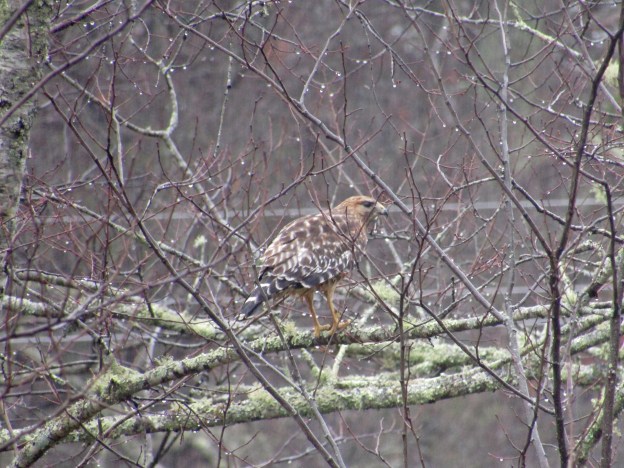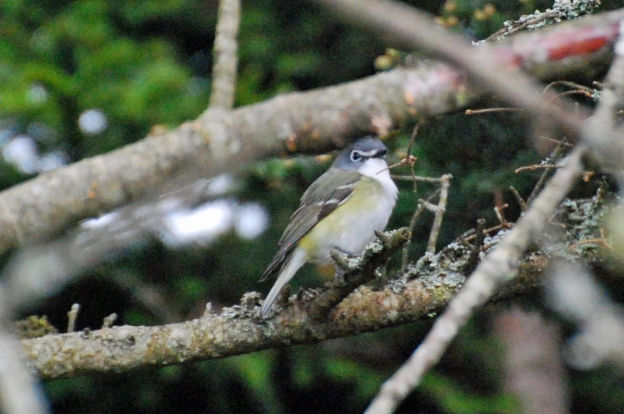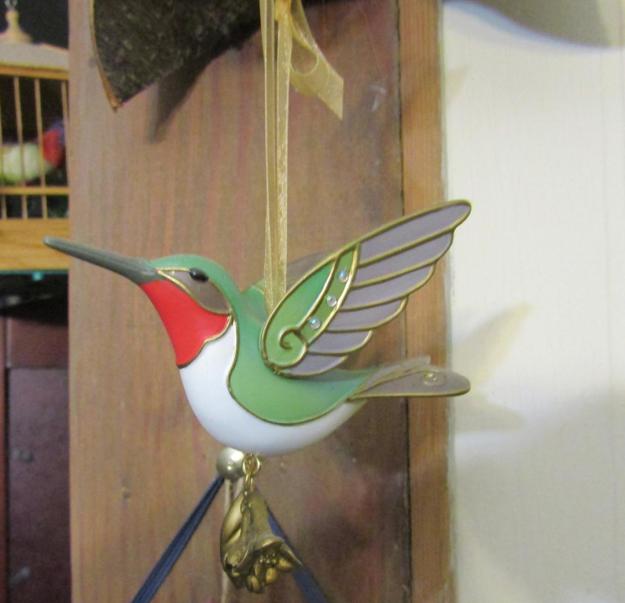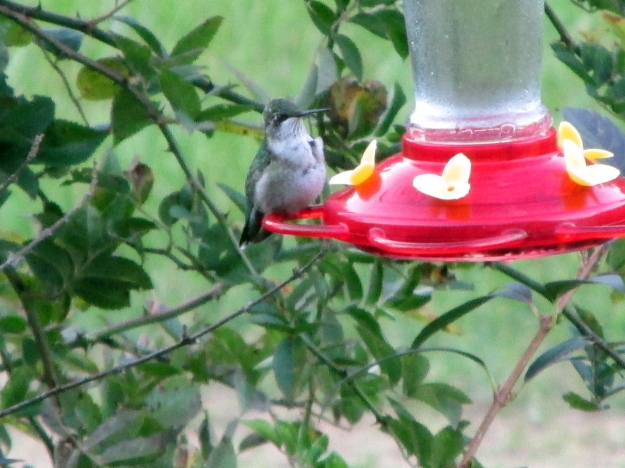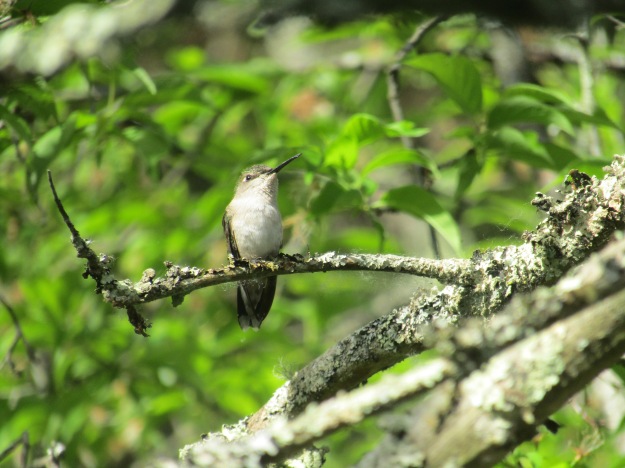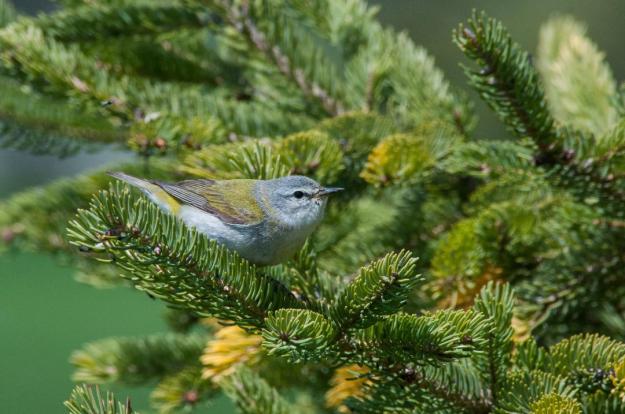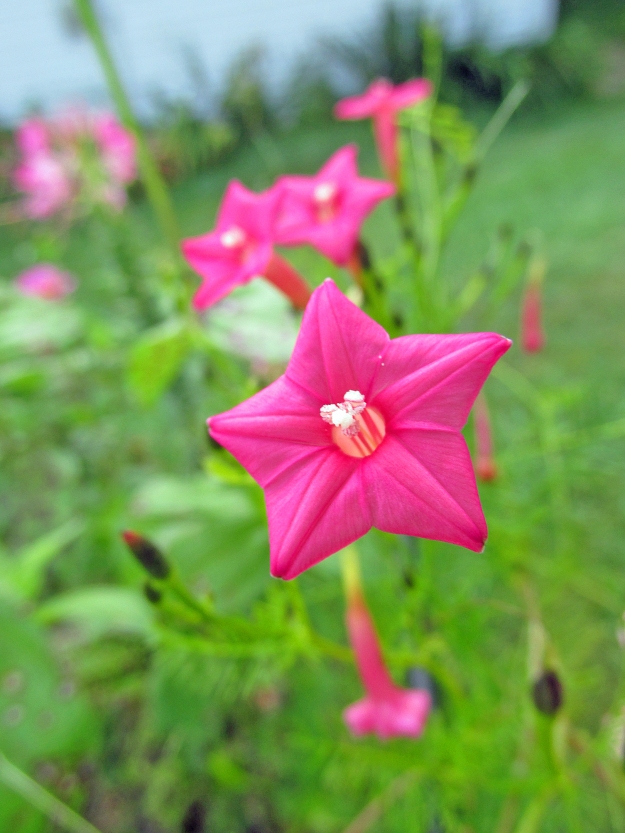
Photo by Bryan Stevens • A tree swallow checks out a nesting box soon after returning in the spring.
Waiting for spring? Join the club. Between alternating bouts of unseasonably warm temperatures and frigid blasts, the weather cannot seem to decide if winter’s hanging in there a little longer or if it’s time to proceed with spring’s arrival.
I’m hopeful it’s the latter. I enjoyed a stroll in the spring sunshine on March 30 along the section of the trail near the industrial park. From the boardwalk over the water I saw my first spring swallows (a purple martin and a couple of Northern rough-winged swallows) as well as a belted kingfisher and several American robins. I also saw my first dragonflies and butterflies of spring, as well as one muskrat enjoying a leisurely swim.
Early Birds
One might think that the wild swings in weather would translate into a messy arrival timetable for some of our returning birds, but so far my own personal observations indicate a different story. At home, the usual spring “early birds,” including wood duck, red-winged blackbird, blue-headed vireo, ruby-crowned kinglet and brown thrasher, have been their usual punctual selves.
The swallows I saw during my Erwin stroll, however, reminded me that one bird hasn’t returned at my home. The early American naturalist and artist John James Audubon knew this particular bird as “white-bellied swallow,” which is a descriptive name, but today the species is known simply as tree swallow.
Tree swallows have been back in the region for weeks, but they sometimes take their time finding their way to the waiting birdhouses at my fish pond. Their return dates in years past have ranged from early March to the middle of April.
Insect-heavy Diet
Swallows are insectivores, so those that return early in the spring must deal with temperature fluctuations. In prolonged cold spells, these insect-eating birds can be hard pressed to locate their usual prey. At such times, they are often forced to retreat to the area’s lakes and larger rivers, where they can swoop over the water and have an easier time plucking cold-numbed flying insects out of the air.
Once milder spring temperatures prevail, the flocks of swallows forced into these necessary habitats will disperse as pairs begin seeking nesting sites. Tree swallows are cavity-nesting birds, which often puts them into competition with Eastern bluebirds. The two species usually manage to work out a truce and settle down to nest in close proximity to each other.
The iridescent blue-green male tree swallow, complete with white underparts and a forked tail, is a handsome bird and a welcome addition to the bird population in any yard or garden. Tree swallows enjoy water, so a nearby pond or creek is a boon for attracting these birds.
Tree swallows haven’t always nested in Northeast Tennessee. Only in the last 40 years have these birds become regular nesting birds in the region. The first nesting record took place in the early 1980s at Austin Springs on Boone Lake in Washington County, Tennessee, according to The Birds of Northeast Tennessee by Rick Knight. Tree swallows soon became regular nesting birds every summer in all five counties that comprise Northeast Tennessee.
Other Swallows
It’s usually not too difficult to find five of the six species of swallows that are known to make Northeast Tennessee and Western North Carolina their home from spring to fall. In addition to tree swallow, the region’s other swallow species include: barn swallow, purple martin, cliff swallow and northern rough-winged swallow. These are all fairly common summer birds in the region. The sixth species, the bank swallow, is a bit of a specialist when it comes to nesting and occurs only sporadically in the region.
While only a handful of swallows range into the United States and Canada, a total of 83 species of swallows can be found worldwide. Some of the common names for these different swallows (also called martins in other parts of the world) are quite descriptive. A sampling includes white-eyed river martin, grey-rumped swallow, white-backed swallow, banded martin, blue swallow, violet-green swallow, golden swallow, brown-throated martin, brown-bellied swallow, pale-footed swallow, white-bibbed swallow, pearl-breasted swallow, red-breasted swallow, mosque swallow, fairy martin, pale martin, tawny-headed swallow and streak-throated swallow.
While many swallows and martins have proven highly adaptive when faced with human disturbances to their habitat, a few species have experienced declines. One species — the white-eyed river martin — was last seen in Thailand in the 1980s and very well may be extinct. Closer to home, the golden swallow is now found only on the island of Hispaniola after disappearing from Jamaica in the 1980s. The Bahama swallow, which nests on only four islands in the Bahamas, is also vulnerable. Incidentally, both these swallows are closely related to the tree swallow, with all of them belonging to the genus Tachycineta. Translated from Greek, the genus name means “fast mover,” a quite accurate description of these graceful and agile flyers.
Good
Neighbors
With their enthusiastic twittering to each other, tree swallows make for friendly neighbors. The local bluebirds may disagree, at first, but they’ll get their feathers unruffled eventually. It’s also a pleasant diversion to watch them swoop over fields and ponds as they help control the insect population.
To increase your chances of hosting your own tree swallows, offer a bird box placed in an open area. Right now is the time to attract their attention with some prime real estate. Plans are available online to help construct your own or pick up one at a gardening center, hardware store or farm supply outlet.

Photo by Bryan Stevens • A male Eastern Bluebird perched on playground equipment at Winged Deer Park in Johnson City.
Many would-be hosts for Eastern bluebirds express disappointment when a pair of tree swallows become tenants instead. The remedy to the disappointment is simple: provide an additional nesting box. Although there will be some initial squabbles, tree swallows and Eastern bluebirds will co-exist if they don’t have to compete for the same nesting box.
There’s one last selling point I want to mention on behalf of tree swallows. While not exactly songsters, they do produce an energetic, chirpy trill that they vocalize persistently when in the company of their fellow tree swallows. It’s hard not to be cheerful when hearing such a jubilant noise issuing from one of our feathered friends.
Hummingbird Observations
While tree swallows and their kin are great to have back, one of the most anticipated returns each year is the ruby-throated hummingbird. As I’ve done in years past, I want to hear from readers when they see their first hummingbird of spring. Email me your observations at ahoodedwarbler@aol.com or post them on my Facebook page. Please include the date and the approximate time of your sighting. Email me at ahoodedwarbler@aol.com or post on my Facebook to share your first sightings. You can also leave a comment here on the blog.





